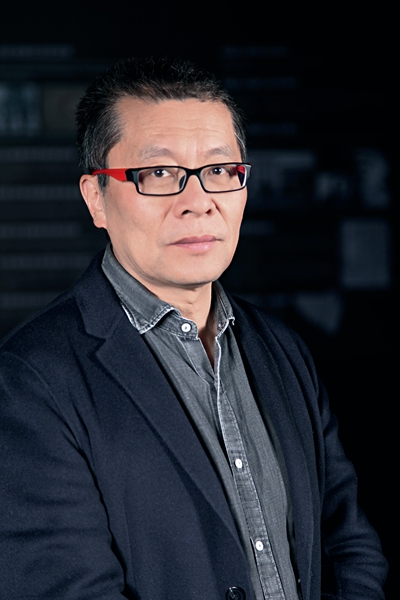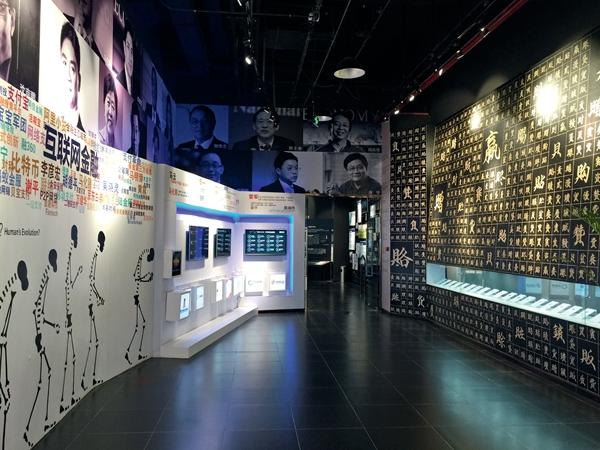A financer's venture into the cultural field
- By Liu Dong
 0 Comment(s)
0 Comment(s) Print
Print E-mail China Today, September 21, 2017
E-mail China Today, September 21, 2017
Chaoyang Park, adjacent to Beijing's East Fourth Ring Road, is the site of a staid red-brick building that emanates a civic ambience. After entering and walking through a coffee shop I came to a well-lit conference room, on whose wall hung the Chinese calligraphic inscription confirming that this establishment was indeed the Museum of Global Finance. It was here that I met with the museum's chairman, Wang Wei.
|
Wang Wei proves that financiers can also be intellectuals. |
I began our interview with the question, "How did you come to combine China's contemporary financial trends with the traditional, old-school concept of a museum?"
Wang Wei answered, "We did not do it out of thin air, but instead responded to the social need. It's a result of our team's exploration. I wanted to build a platform on which to explain contemporary financial concepts to the general public and illuminate the impact they have on daily life, but under the elegant and convivial backdrop of a museum."
A Self-taught Expert
In the summer of 2008, many financial specialists began scanning history for inspiration in the wake of the global subprime crisis. There were reports in foreign media of a substantial uptick of visitors to the Museum of American Finance on Wall Street. Wang Wei was among the many whose curiosity was whetted by the crisis. Shortly after, in the company of the then vice mayor of Tianjin, Cui Jindu, he paid a visit to the museum. Both men drew great inspiration from their one-hour visit. Compared with its European peers, the U.S. financial industry has a short history. But vivid images created through the museum's advanced acoustic photoelectric technology enabled visitors to gain a rapid understanding of the history of the industry and how the crisis came about.
Upon their return, Wang Wei and Cui Jindu both realized that China needed such a museum, and immediately set about establishing one. Cui's task was to find a suitable place; Wang's to engage financial expertise. Cui quickly achieved his goal, but Wang's was less straightforward. A museum of finance is a cross-border concept, totally unknown to contemporary financers. There is also a dearth of museum curators specializing in finance.
|
The Museum of Fintech, a high-end financial community established in Beijing in 2015, is the first of its kind in the world. |
Seeing no other alternative, Wang decided to do it himself. "I forced myself to undergo training and become a qualified expert in the crossover field." A financial background by virtue of more than 20 years' experience in the industry, notably as a specialist in merger and acquisitions, gave wings to Wang's interest in the museum. Before long he had acquired a systematic understanding of finance and its history, economic history, and the history of economic thought. After reading classic Chinese works on financial history and related writings in English and Japanese, and applying his practical experience to what he had learned, Wang gradually gained new insights and a clear picture of the realm of finance. He also traveled extensively in search of finance-related exhibits for the museum.
On June 9, 2010, the Chinese Museum of Finance, China's first privately owned museum to focus on the finance industry, officially opened its doors. It is located on the site of the former French Club, a century-old European building, in Tianjin. Exhibits in the 2,400 sq.m. main hall included handwritten manuscripts by acknowledged father and founder of contemporary economics Adam Smith, Thomas Edison's first light bulb, documents relating to the establishment of the Shanghai Stock Exchange, including directives from former premier Zhu Rongji, bonus stocks from the "cultural revolution" period, over 200 currencies from various historical epochs in China and overseas, financial bills, and financial artifacts. Apart from donations from friends and associates in financial circles, the bulk of these exhibits were personally purchased by Wang on his global forays to stock the museum.
Many distinguished guests were present at the museum's opening ceremony, and well-known Chinese economists Wu Xiaoling and Zhang Weiying were invited as its consultants. Former director of the Museum of American Finance Alan Lee Kjelleren also made a special trip to attend the ceremony.
The success of this venture inspired Wang to carry on in this vein. He has since built five more financial museums – in Tianjin, Suzhou, Beijing, Shanghai, and Shenyang – all within the past decade.








Go to Forum >>0 Comment(s)